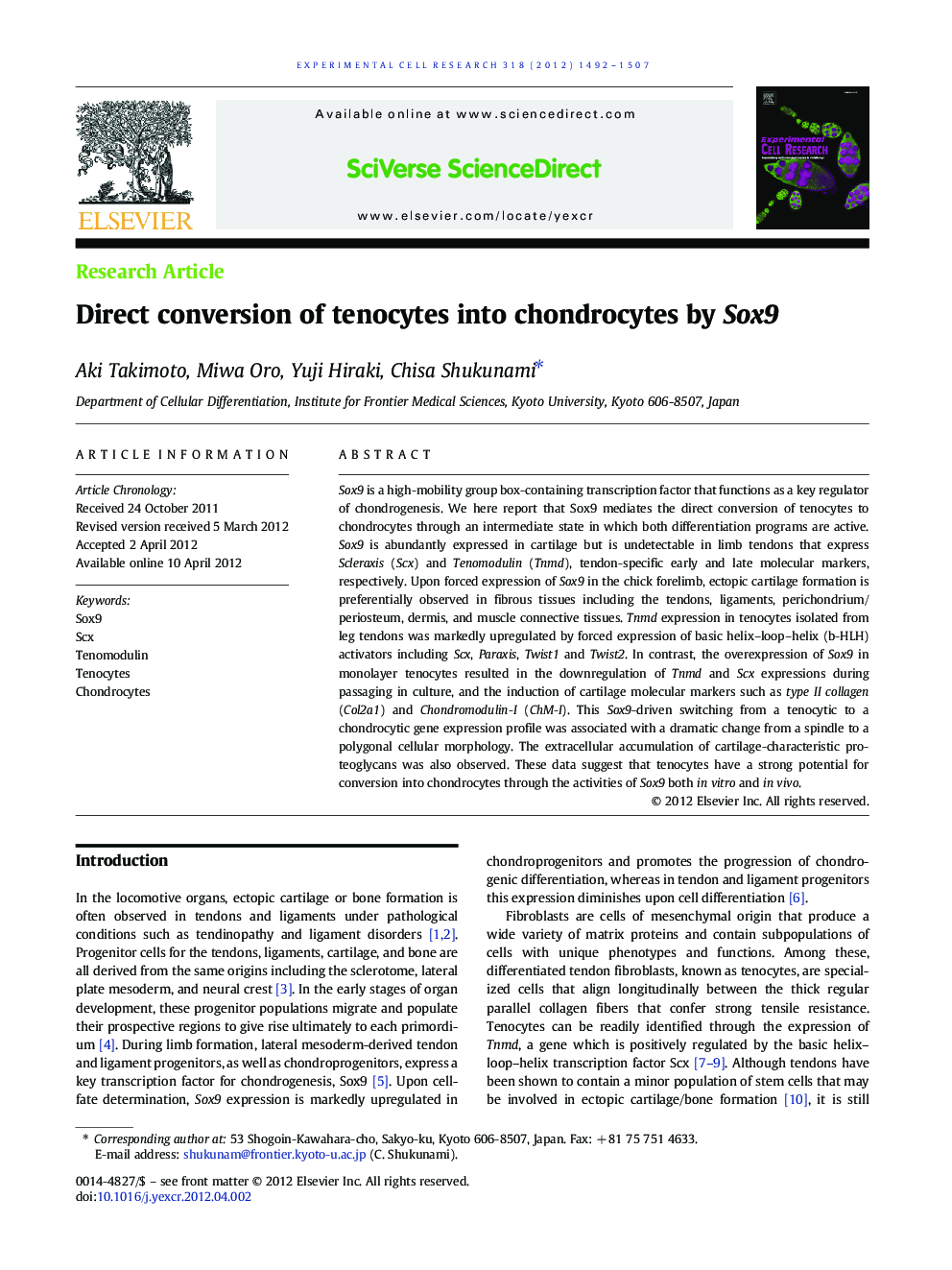| Article ID | Journal | Published Year | Pages | File Type |
|---|---|---|---|---|
| 10904484 | Experimental Cell Research | 2012 | 16 Pages |
Abstract
Sox9 is a high-mobility group box-containing transcription factor that functions as a key regulator of chondrogenesis. We here report that Sox9 mediates the direct conversion of tenocytes to chondrocytes through an intermediate state in which both differentiation programs are active. Sox9 is abundantly expressed in cartilage but is undetectable in limb tendons that express Scleraxis (Scx) and Tenomodulin (Tnmd), tendon-specific early and late molecular markers, respectively. Upon forced expression of Sox9 in the chick forelimb, ectopic cartilage formation is preferentially observed in fibrous tissues including the tendons, ligaments, perichondrium/periosteum, dermis, and muscle connective tissues. Tnmd expression in tenocytes isolated from leg tendons was markedly upregulated by forced expression of basic helix-loop-helix (b-HLH) activators including Scx, Paraxis, Twist1 and Twist2. In contrast, the overexpression of Sox9 in monolayer tenocytes resulted in the downregulation of Tnmd and Scx expressions during passaging in culture, and the induction of cartilage molecular markers such as type II collagen (Col2a1) and Chondromodulin-I (ChM-I). This Sox9-driven switching from a tenocytic to a chondrocytic gene expression profile was associated with a dramatic change from a spindle to a polygonal cellular morphology. The extracellular accumulation of cartilage-characteristic proteoglycans was also observed. These data suggest that tenocytes have a strong potential for conversion into chondrocytes through the activities of Sox9 both in vitro and in vivo.
Related Topics
Life Sciences
Biochemistry, Genetics and Molecular Biology
Cancer Research
Authors
Aki Takimoto, Miwa Oro, Yuji Hiraki, Chisa Shukunami,
